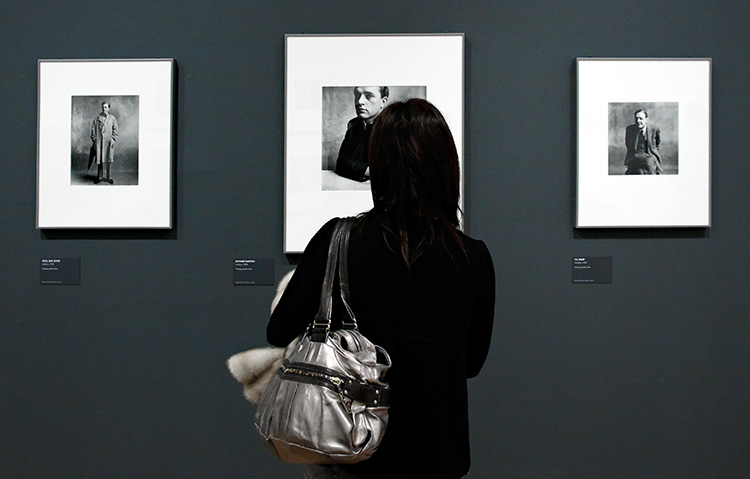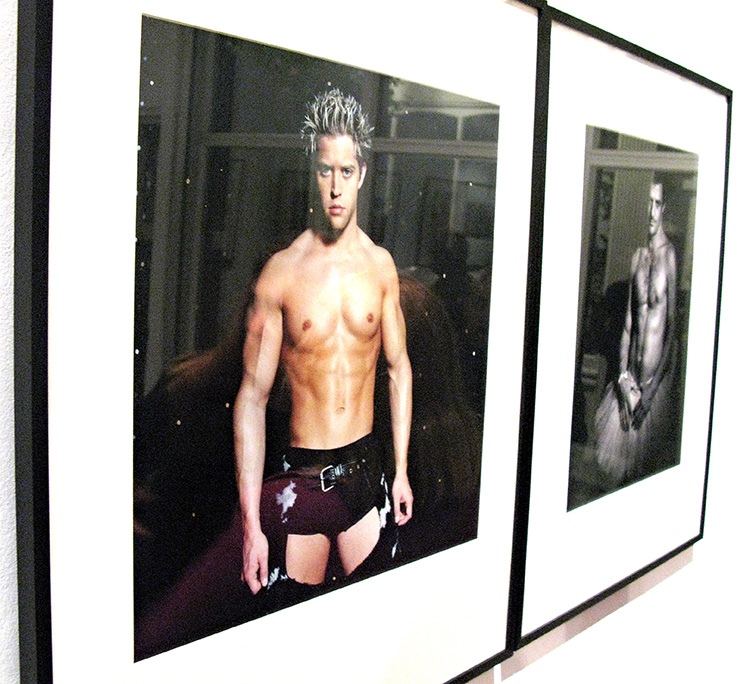If you are at loose end in London this weekend it’s your last chance to see “Irving Penn Portraits” at the National Portrait Gallery. Although formal portraiture isn’t something I do, I’ve always thought that you can often learn by studying the way other photographers work. Here’s the review I wrote for theblogpaper.co.uk:
“We don’t call them shoots here. We don’t shoot people, it’s really a love affair”
Irving Penn’s approach was a million miles removed from that of the machine-gun approach of the modern-day paparazzi. But, as a new exhibition at the National Portrait Gallery shows, he was undoubtedly a master craftsman who loved photographing his subjects rather than a chaser after Z-list “celebrities”.
Penn started work at American Vogue in 1943 and when he rose to prominence soon after the Second World War, the Hollywood studio system was only just coming to an end. But rather than kow-tow to the people he photographed he was determined to take pictures his way.
Eschewing the styles favoured by the other leading photographers of the period, he wedged his subjects in a corner or placed them on a grimy old rug. Their reaction to this novel approach is often visible in their poses and expressions. One sitter had the temerity to object and refuse to pose until the studio was cleaned. Penn had no hesitation in sending them packing.
His publishers sent him to Europe and, with the benefit of natural light in his studio in Paris, this was the point from which Penn really flourished. By the end of the 1950s, he had been named one of world’s 10 greatest photographers in an international survey carried out by Popular Photography.
It wasn’t only the great and the good that passed before his camera. While a list of the people he photographed reads like a Who’s Who of the 20th century, Penn was also an astute observer of street workers in his “Small Trades” series.
Before turning to photography because he didn’t think he was good enough as an artist, Penn had studied drawing, painting and design. Possibly as a result, his sense of composition was impeccable. Both in group shots and in photos of individuals everything seems perfectly placed without being forced.

Irving Penn portraits, National Portrait Gallery
Perhaps this was because Penn was also skilled at still life (his first ever Vogue cover) and so understood how all the elements should be arranged to make the whole. Or perhaps it was because he had an instinctive eye and empathy with his subjects. The result is images that are simple and stripped down without ever quite feeling stark, even though the detail of every pore or wrinkle is often crystal clear.
Magdalene Keaney, the NPG’s associate curator of photographs, spent more than two years selecting and assembling the prints, some of which have never been exhibited before. The two things that stood out for her during her research were that Penn understood and could read a face like the words on a page, and that he often seemed to be exploring what was the least that could constitute a portrait.
Some critics have suggested that Penn wasn’t quite sure what to make of the Swinging Sixties, as another generation of photographers emerged. But as you study the work he produced over more than half a century there is a sense of a constant development and refinement rather than any huge leaps of style. The Grateful Dead and Nicole Kidman were photographed with just as much aplomb as Igor Stravinsky and the Duchess of Windsor.
And while other people were out partying Penn, ever the perfectionist, was hard at work in the darkroom, reviving and refining an old platinum and palladium process that would allow him to print his work with even greater depth of detail.
Interviewed by American Photo, Penn said: “I have always stood in the awe of the camera. I recognize it for the instrument it is, part Stradivarius, part scalpel.” This exhibition is both lyrical and an incisive depiction of Penn and his work, and should be a must-see not only for photographers and lovers of portraiture but also as an insight into recent social history.
Irving Penn Portraits is organised by the National Portrait Gallery, London in collaboration with the Irving Penn Studio, with support from Bank of America Merrill Lynch. It runs until June 6 and will then transfer to Rome.


